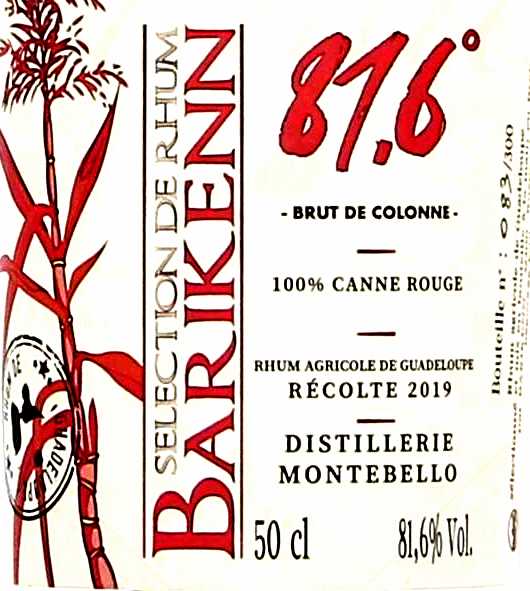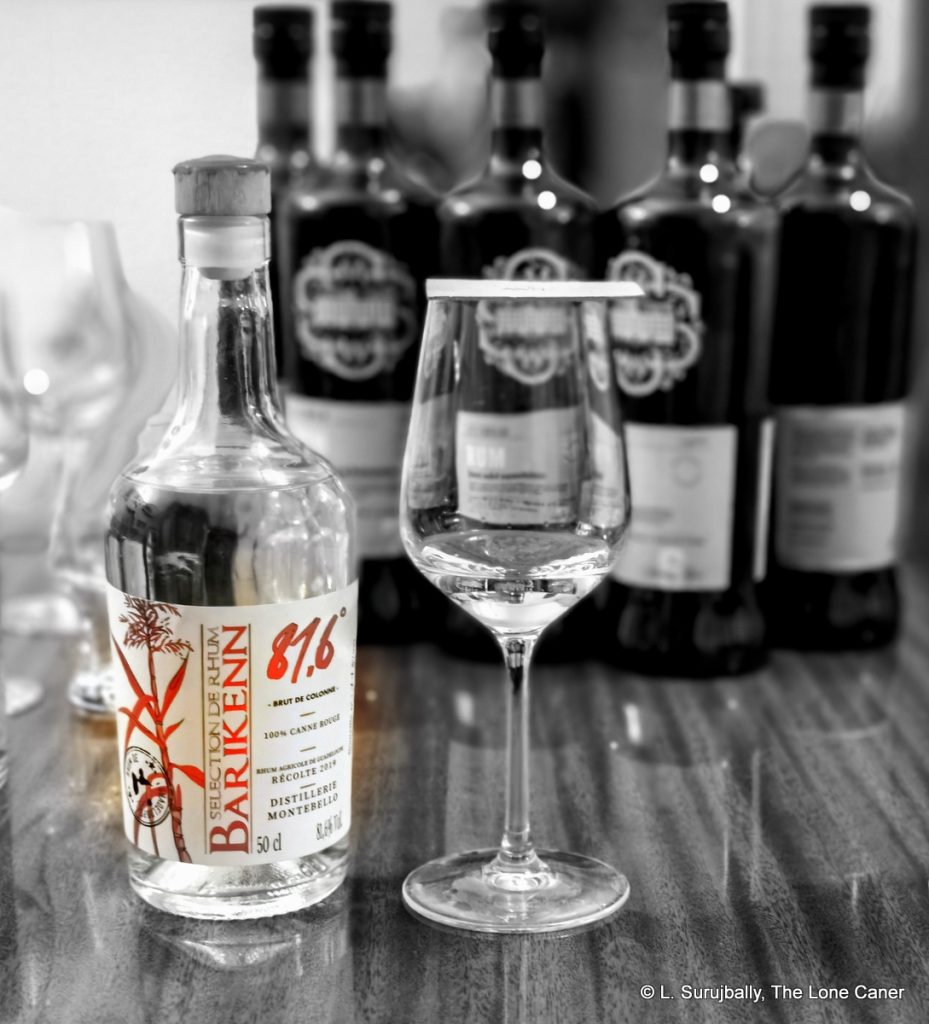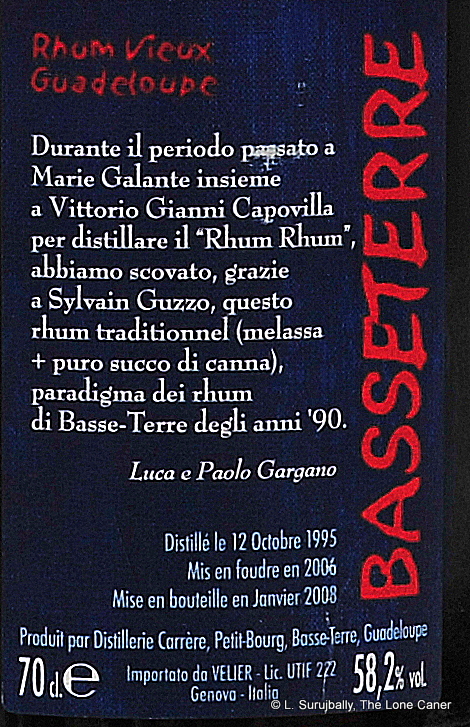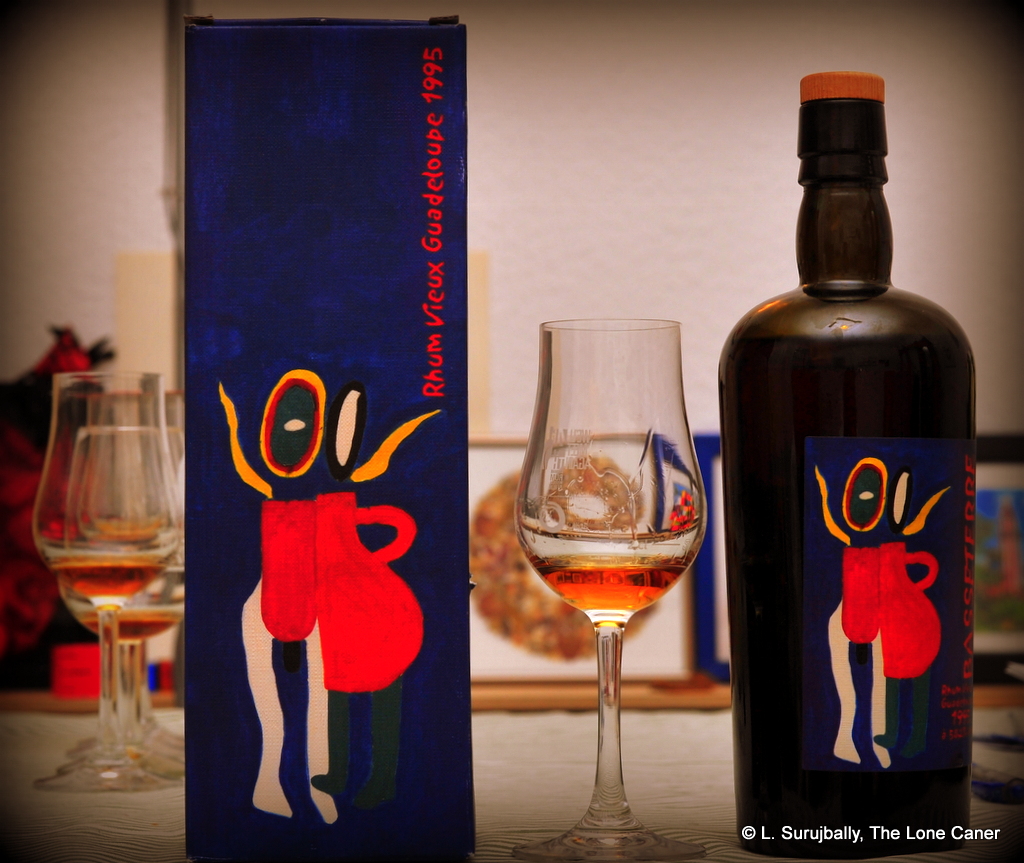The full name of this rum is the “Barikenn ‘81.6’ Brut de Colonne Rhum Agricole Blanc de Guadeloupe (Montebello)”. I imagine that just trying to say the whole thing in one breath distracts somewhat from the fact that this is one of the most powerful rums of recent memory (yes, I know there are others that eclipse it – I made the list, after all), and if one loses focus and takes it too lightly then one might just find oneself being blasted into next week.
Most of us know something about Montebello, but who is Barikenn? At first I thought it was a lesser-known brand name from the small distillery on Guadeloupe from which the rhum hails – the principle is not unheard of, after all. I was then corrected by a gent on Instagram who pointed out very politely that it was a French indie bottler, namely himself, Nicholas Marx (no relation to Karl), and the company was named after an old spelling variant of barrique, or barrel, in Breton. He founded the Brittany-based independent bottling outfit in 2019 in order to share his passion for high quality full-proof rums, free from adulterants and completely transparent – and while he did not explicitly state it, I get the impression that until recently his market was primarily regional (much like Tristan Prodhomme of L’Esprit, which is also in Brittany, began his own operations).
If he felt that staying small was going to last, the reception of his bottlings soon disabused him of such notions. Starting out in 2019 with a pair of well regarded Foursquare and Worthy Park rums, he added a Guyanese 8 YO the following year which WhiskyFun rated 91 points … and people started to take notice. 2021 was when things got really interesting, because aside from a Mauritius and Fiji addition to the roster, he dabbled in water not many indies would dare to, so soon: unaged, white, column-still cane-juice rhum…at still strength (I amuse myself by wondering if he was taking a cue from Tristan’s high proofed South Pacific and Diamond whites). I bought a bottle in Berlin last year, and gingerly tasted it, feeling as nervous as on my first date all those years ago and with good reason – rums north of 80% can rearrange your insides, if not treated with care.
 Nosing it makes the point quite clearly, because even a small and delicate sniff is like stuffing an oversalted maggi-cube up your nose, or snorting a spoonful of marmite seasoned with extra cayenne. I’m aware that this is a peculiar way for any rum reviews’s nose section to start but stay with me…it does develop. After a while one can sense lemon-infused sugar water, dish washing soap, tart pears, cranberries and red currants. A little rubber, a few acetones, a touch of vinegar (or sweet cider), and the notion one is left with after a few minutes, is one of commendable restraint in something so notionally powerful. Unlike, say, the Marienburg, the Wild Tiger or the Sunset Very Strong, the aromas on this Barikenn aren’t out to trample you flat (and then stomp on the pieces) but seem genuinely relaxed and easier than one might expect..
Nosing it makes the point quite clearly, because even a small and delicate sniff is like stuffing an oversalted maggi-cube up your nose, or snorting a spoonful of marmite seasoned with extra cayenne. I’m aware that this is a peculiar way for any rum reviews’s nose section to start but stay with me…it does develop. After a while one can sense lemon-infused sugar water, dish washing soap, tart pears, cranberries and red currants. A little rubber, a few acetones, a touch of vinegar (or sweet cider), and the notion one is left with after a few minutes, is one of commendable restraint in something so notionally powerful. Unlike, say, the Marienburg, the Wild Tiger or the Sunset Very Strong, the aromas on this Barikenn aren’t out to trample you flat (and then stomp on the pieces) but seem genuinely relaxed and easier than one might expect..
The taste is large, round and strong, for sure, but not, thankfully, harsh. Initial tastes are dirty, earthy, salty, yeasty, bread-y, quite pungently so, and the added marmite and vegetable soup flavours may not be to everyone’s taste. However, after some time these recede and give way to the fruit basket: bananas, red currants, strawberries, bubble gum, some pineapple slices, which leaves me wondering where this was hiding when I was smelling it. It does do somewhat better with some water, adding sweet and sour chicken, soya sauce, brine and a sort of sparkly and intense fruity note, plus plastic, brine and acetones, in a nice mix. It all leads to a long and sharp finish redolent of resin, plastic, unripe green fruits that’s really too thin and lacks heft…yet nothing I could genuinely warn you away from.
The whole thing just works. The whole experience is one of intensity, power and puissance which falters a bit at the end, yet the tastes are so pungent and deep that all I could think was that this is what the Marienburg could have aspired to, because the strength does not actually detract here as it did there: it just needs to be handled with some care and patience.
These days it seems there is some kind of obscure, unstated and never-acknowledged race to the top for these unaged white rums. Blending and filtration are lesser concerns, and it’s all about finding a rum that’s exceptional straight off the still – something raw and undiluted, a no-age ultra-proofed Sam Jackson style m*f*er that’s made to show it’s the meanest, the baddest and the tastiest, a rhum which can take out Mace Windu without busting a sweat or resorting to force lightning. The Barikenn Montebello is as serious and as tasty a white rum as you’ll have all year, proofed up and jacked up to a level of taste intensity that ensures you don’t just get the point…you get the whole kitchen sink as well.
(#940)(84/100) ⭐⭐⭐½
Other notes
- 300 bottle outturn. The rhum was (column) distilled in 2019, rested in inert steel tanks, and bottled in 2021.
- Source of the cane juice is single variety “red cane” which reputedly has exceptional taste qualities.
- Barikenn has released another variation of this rhum in 2022, but at a milder 52º – it’s from the same 2019 batch.



